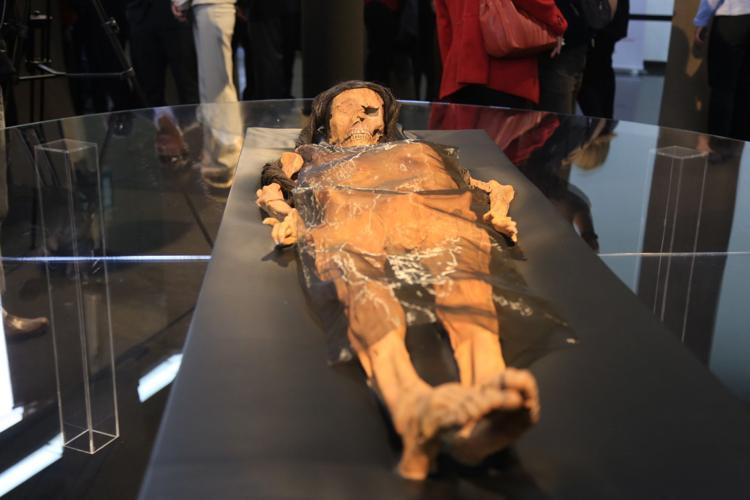John Verano is no stranger to mummies or forensic science, so it came as little surprise when experts sought him out as a consultant last November for a project to reconstruct the face of a 1,700-year-old woman buried in Peru.
Archaeologists discovered the mummy in 2005 while working at El Brujo Archaeological Complex in northwest Peru. Curators at El Brujo's museum exhibit last year enlisted experts like Verano, an anthropology professor from Tulane University, to aid in the process of recreating her face using a 3-D scanning technique normally applied in criminal investigations.
Locals refer to her as "Señora de Cao," or the Lady of Cao, and her reconstructed face will be on display at El Brujo in late August. Her namesake comes from the nearby town Magdalena de Cao.
Verano said the face looks "quite realistic," but stressed the model is an approximation.
"There's always some difference of opinion about how a face turned out, but I think using the technology they have here, which was a 3-D scanner, it came out looking human and looking pretty realistic. I think that's about the best you can do," Verano said, talking by phone Monday (July 24) from Peru.
"We'll never be able to test it of course because it's not like a modern forensics case where you can go back and find photographs of someone or show their family members or something like that, so we can't really ever know how much this really resembles the person except in general terms."
In addition to providing experts feedback on their reconstruction work, Verano assisted in analyzing the Lady of Cao and in unwrapping her from 20 layers of fabric. She was found wearing a crown, and had tattoos of snakes, spiders and religious symbols on her body. Clubs and spears were among more than two dozen weapons buried with her, according to a Tulane University news release.
Verano noted unwrapping a mummy is "a slow process, especially so for large funeral bundles like this one." Did it smell bad? Not in this case, although Verano said other mummies he has encountered have been "more fragrant."
Verano told National Geographic in June it is hard to know who Lady Cao was without written records. Experts told the publication she was likely a 20-something-year-old aristocrat from the Moche culture, which thrived in that area 1,000 years before the Inca.
Verano, who has worked with El Brujo since it opened in 1990, said experts usually perform a computed tomography, or CT, scan on mummified remains to acquire a facial reconstruction. Another option is using clay to remodel facial features directly on the skull, a method, though traditional, Verano is very familiar with. (Fellow Tulane instructor Roy Paschal, a retired forensic artist, taught a one-week course on using clay to remodel faces last summer.)
Verano said the Lady of Cao was too fragile for either option.
"We couldn't do that with this one," Verano said. "So the 3-D scanner was really the only way they could do it, she was just too fragile to move."
Verano said facial reconstruction is considered "a method of last resort" in the forensics world, but they have helped investigators successfully identify people in a few cases. In a museum context, he noted facial reconstructions are more common, with the most popular case being the face of King Tut.
In Verano's view, facial reconstructions in a museum context give people an idea of what someone may have looked like alive rather than simply having them look at a skull or a mummy. In the case of the Lady of Cao, it was particularly helpful; Verano said her face was "not very well preserved at all."
Verano's work with mummies continues. He currently has CT scans of two Egyptian mummy heads back at Tulane, one from a mummy discovered in the 1800s.
Verano will work with a team from Brazil to complete the facial reconstructions. Those mummy heads and their facial replicas could be on exhibit at Tulane one day, he said.






